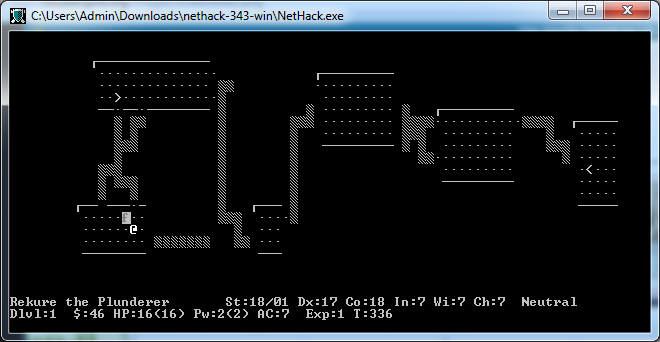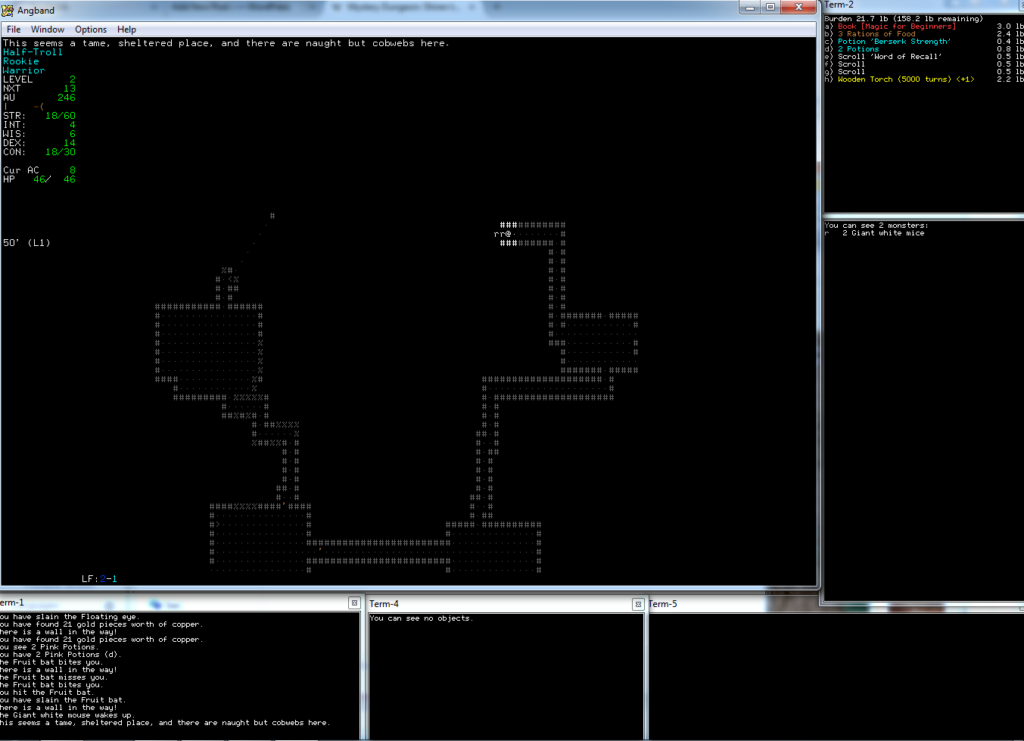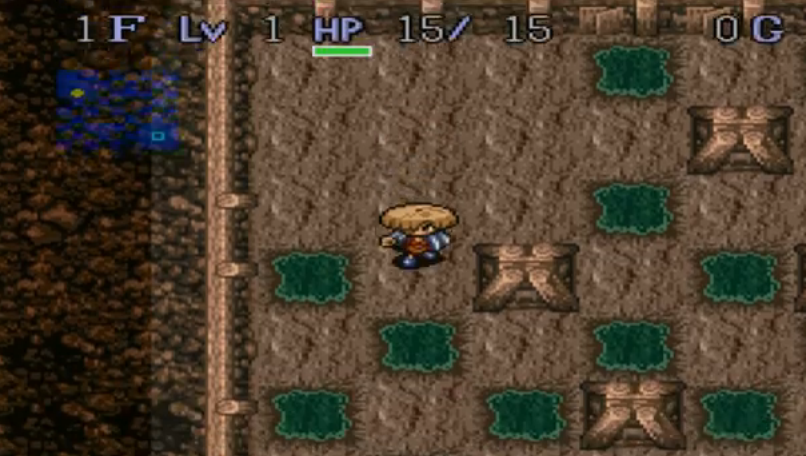
After everyone got sick of retro-style pixel art platformers, the indie scene embraced a new trend that will surely become boring soon: the rogue-lite. Those games usually follow the formula set by Spelunky and Binding of Isaac by combining random generation of levels and permanent death with easy to understand action-oriented gameplay. But as good as some of those games might be, most of them never feel like the actual descendants of classic 1980 RPG Rogue.
Traditional roguelikes are inherently non-mainstream. They are the games where a bad move can mean loss of all progress, where only way to win is to learn the rules – and the rules can be much more complex than anything gamers are used to and where graphics can often be reproduced by writing with a monospaced font on a black background. The games one can play for years without winning because the creativity of their programmers extends to inventing as many ways of killing unsuspecting players as possible.
And yet there is an audience for them – not a big one but definitely a very dedicated one. So, what is it that makes people play games like that?
Early roguelikes: games of chance and the search for replay value
A common factoid told about the origins of roguelike genre is that it didn’t start with Rogue but actually two years earlier, with Beneath Apple Manor, created by Don Worth (the programmer, not the photographer) as a D&D-inspired maze game. The truth is that while Beneath Apple Manor is probably the first role-playing game for home computers and it has randomized levels, it lacks a defining trait of roguelike genre: permanent death. Instead of ending the game after being killed, player had the ability to revive his character at the cost of decreased statistics (which worked different than in other RPGs – here, they determine the number of specific actions you can perform before having to rest).
So it seems that the first roguelike was actually Rogue – a game in which players entered a randomly generated dungeon in search for the mysterious Amulet of Yendor. Rogue was a mainframe game, although unlike earlier titles for PLATO system, it was designed for UNIX terminals without graphical capabilities. To get around this without using a text parser (a common feature in games designed for text-based terminals), Rogue used letters and symbols to represent in-game objects (this was achieved through a programming library called curses) – something many roguelike games do even today.
One of the basic ideas behind Rogue was to give players replay value – unlike in almost every other game from that era, no two sessions of Rogue were supposed to be the same. This decision, of course, had its drawbacks: success in the game depended heavily on player’s luck – anyone who played Rogue will probably remember several games ended by starvation due to the random number generator deciding not to leave enough food rations in the dungeon. This didn’t discourage the players though – Rogue was a huge hit at UC Berkely and students from different universities wanted games like that too.
Thus, the first roguelikes were created – beginning their life as literal clones of Rogue and with time evolving in different directions. Among those games, the most notable ones are Hack which gave players a dog companion and forced them to descend into the depths of hell and Moria, a sadistically difficult roguelike in which the player alternated between fighting his way through the dungeon and trading in a small town above it.
Angband, NetHack and the rest

Early roguelike games were often more interesting to the players than to their original developers. As fans of the games were often computer science students and teachers (or other people related to the universities and familiar with programming) and most of the games (with a notable exception of original Rogue) were free and open source, the creator’s abandonment didn’t always mean the end of the project. As the fans took over, Moria was transformed into uMoria and then Angband while Hack gave birth to NetHack. As those games developed further, their complexity increased expotentially – but surprisingly, the games became more fair. Unlike Rogue, almost every game of NetHack can be won by a sufficiently experienced player.
Those games gave rise to different subgenres of roguelike. Descendants of Angband (and there are many of them due to the fact that Angband stored a lot of data in easily editable text files) have large, scrolling levels that don’t persist (if you go down the stairs and then up, the game will generate a level from scratch – this is important because any items left on a level you’re leaving are lost forever) and are mostly combat-oriented. This is usually the dungeon crawling style of roguelike: the most important things are exploration, looting and fighting. If you think this sounds kind of like first Diablo, you’re absolutely right – Diablo took influence from Moria and Angband and it was even originally planned as a turn-based game.
NetHack and games it influenced are based on a completely different approach. The levels are small but persistent, there are a lot of complex interactions between items and everything is a big, difficult, randomly generated puzzle. Players are forced to remember a great number of commands – and every single one of them, from praying to sitting to engraving, has its uses. Of course, the complexity comes with difficulty as ‘hacklikes’ can kill you in many different ways. Games like NetHack are roguelikes at their most intimidating – there are tons of monsters and items, almost everything has something unique and/or unpredictable about it and solutions to many challenges can seem strange or counter-intuitive (while there’s logic behind everything, it’s often quite abstract or based on obscure references).
Different directions
As time went by, the ideas behind roguelikes changed. While most of older titles built their world downwards into the deep dungeon, some games adopted a design similar to a typical computer RPG with a big, open overworld, an overarching plot, optional sidequests and several smaller dungeons instead of just one but very big. A game like that, inspired mostly by hacklikes, is Ancient Domains of Mystery, one of the few games as complex as NetHack. Another popular one, this time done in Angband style, is Tales of Maj’Eyal (previously known as Tales of Middle-Earth).
Other roguelikes went against the cryptic nature of most games in the genre, attempting to create a game that is easy to pick up, balanced and possible to complete without reading walkthroughs (known as ‘spoilers’ in roguelike communities). Those games often include extensive tutorials and intuitive interfaces which make them less intimidating for newcomers while still being difficult to complete. Dungeon Crawl Stone Soup is the most known representant of this design philosophy. Brogue is another popular one. The subgenre of ‘coffe break roguelikes‘ (DoomRL and Desktop Dungeons are the most archetypal examples) combine well-designed interfaces and relatively easy rules of the aforementioned games with shorter playtimes to achieve a more arcade-like feeling.
There are also games which abandoned or downplayed the typical RPG gameplay of roguelikes without going into rogue-lite territory. One example of such game can be Dwarf Fortress, an incredibly complex strategy game (although there is also an RPG-like ‘adventure mode’ available) which attempts to simulate a whole randomly generated fantasy world. Ultima Ratio Regum also attempts to generate whole worlds, although it seems to aim at a more narrative-oriented experience (hard to tell what will become of that as the game is still in pretty early development stage).
To @ or not to @

Should you play roguelikes? As a fan of the genre, I’m inclined to say ‘yes’, although I must admit that this isn’t the genre for everyone. Rogue-lite games, while often fun, are nowhere near as satisfying as complex traditional roguelikes like NetHack or ADOM. On the other hand, they’re not such a huge time investment – remember, people are not kidding when they say the couldn’t beat NetHack for decades.
Probably the best way of getting into the genre would be by playing rogue-lites, games with optional permadeath (Castle of the Winds, Tales of Maj’Eyal) and graphical roguelike games for consoles. Games designed with modern sensibilites like Dungeon Crawl can be a good starting point too – there are even people out there who claim those are actually the best roguelikes, although the fact that – unlike ‘obtuse’ and ‘unbalanced’ NetHack – they don’t allow you to turn your cat into a silver dragon, kill Vlad the Impaler with a blunt dagger or survive a bolt of thunder followed by a disintegration beam sent by an extremely angry god kind of proves them wrong.
Another way (the one I’ve chosen a few years ago) could be starting with the earliest title like Rogue and Moria so that you can see how far those games have come and learn to appreciate the freedom given by increased complexity. This, of course, requires high tolerance for bad interfaces and lack of graphics.
All in all, traditional roguelikes are hardcore games for hardcore audience. It’s an inherently niche genre and as such, not everyone will be able to appreciate it – but those few who can stand extreme difficulty, permanent consequences and antiquated presentation will find challenge, fun and even beauty in crawling through ASCII dungeons.